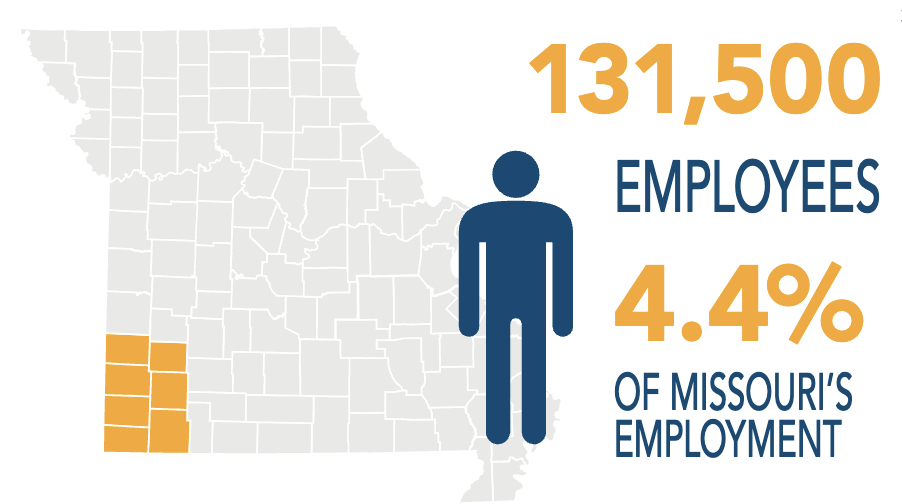Southwest Region
Vision Statement:
Enrich the region’s economy by preparing businesses and the workforce for global competitiveness. Guiding principles that support the mission are engagement, innovation, leadership, accountability, and focus. Engaging youth and individuals with barriers to employment while leveraging resources of the WIOA partners to provide a full array of appropriate services in order to focus, train and preparefor the future needs of employers.
Southwest Labor Market Overview
The Southwest Region of Missouri includes seven counties, with key cities such as Joplin, Neosho, and Monett. In 2023, the region employed 131,500 workers, accounting for 4.4% of Missouri’s workforce, with an unemployment rate of 3.1%, slightly above the state’s 3.0% average. The workforce is aging, with 23.8% of workers aged 55 or older, and the region has a higher Hispanic population (8.9%) compared to the state average of 4.8%. Educational attainment is below the state average, with only 27.8% of residents holding an associate degree or higher, while 13.0% have less than a high school education.
The region’s largest industries are manufacturing (23,700 jobs), healthcare and social assistance (15,300 jobs), and retail trade (14,400 jobs). From 2019 to 2023, employment grew by 1.4%, with transportation, construction, and retail trade gaining jobs, while manufacturing and healthcare saw declines. The region has high employment concentrations in food manufacturing, animal production, and truck transportation, reflecting its strong presence in agriculture and logistics. Future job growth is expected in trucking, warehousing, education, and hospitals, supporting long-term workforce needs.
The most in-demand jobs include truck drivers, retail sales, and healthcare roles such as registered nurses and nursing assistants. Online job postings indicate high employer demand for nurses, truck drivers, and retail supervisors. Employers report hiring challenges due to a lack of skilled workers, with on-the-job training remaining a key workforce strategy. Projected job growth over the next decade will be driven by healthcare, education, logistics, and technical services, shaping the region’s labor market in the years ahead.
Southwest Director
Sherri Rhuems
Local Plan
Explore our comprehensive strategy to drive workforce development and economic growth in the Southwest Region.


